541 low relevance results shown for 'Red'. Prev |1|2|3|4|5|6|7|8|9|10|11|12|13|14|15|16|17|18|19|20|21|22 | Next | View 100 per page
Showing low relevance matches only. Return to normal search results
DNA - The transmission of heritable characteristics from one generation to the next involves DNA and genes ACSSU097 Year 6 Physical Sciences
Electrical Circuits - Electrical energy can be transferred and transformed in electrical circuits and can be generated from a range of sources ACSSU115 Year 7 Earth and Space Sciences
Earth Moon Sun - Predictable phenomena on Earth, including seasons and eclipses, are caused by the relative positions of the sun, Earth and the moon ACSSU229 Year 10 Physical Sciences
Forces and Motion - The motion of objects can be described and predicted using the laws of physics ACSBL029 Year 11 Biodiversity and the interconnectedness of life
Ecosystem dynamics - Models of ecosystem interactions (for example, food webs, successional models) can be used to predict the impact of change and are based on interpretation of and extrapolation from sample data (for example, data derived from ecosystem surveying techniques ACSBL085 Year 12 Heredity and continuity of life
DNA genes and the continuity of life - Frequencies of genotypes and phenotypes of offspring can be predicted using probability models, including Punnett squares, and by taking into consideration patterns of inheritance, including the effects of dominant, autosomal and sex-linked alleles and mu ACSBL090 Year 12 Heredity and continuity of life
Continuity of life on Earth - Natural selection occurs when selection pressures in the environment confer a selective advantage on a specific phenotype to enhance its survival and reproduction; this results in changes in allele frequency in the gene pool of a population ACSBL091 Year 12 Heredity and continuity of life
Continuity of life on Earth - In additional to environmental selection pressures, mutation, gene flow and genetic drift can contribute to changes in allele frequency in a population gene pool and results in microevolutionary change ACSCH056 Year 11 Molecular interactions and reactions
Intermolecular forces and gases - The shapes of molecules can be explained and predicted using three dimensional representations of electrons as charge clouds and using valence shell electron pair repulsion (VSEPR) theory ACSCH073 Year 11 Molecular interactions and reactions
Rates of chemical reactions - Catalysts, including enzymes and metal nanoparticles, affect the rate of certain reactions by providing an alternative reaction pathway with a reduced activation energy, hence increasing the proportion of collisions that lead to a chemical change ACSCH091 Year 12 Equilibrium acids and redox reactions
Chemical equilibrium systems - Over time, physical changes and reversible chemical reactions reach a state of dynamic equilibrium in a closed system, with the relative concentrations of products and reactants defining the position of equilibrium ACSCH096 Year 12 Equilibrium acids and redox reactions
Chemical equilibrium systems - Equilibrium position can be predicted qualitatively using equilibrium constants ACSCH097 Year 12 Equilibrium acids and redox reactions
Chemical equilibrium systems - Acids are substances that can act as proton (hydrogen ion) donors and can be classified as monoprotic or polyprotic depending on the number of protons donated by each molecule of the acid ACSCH098 Year 12 Equilibrium acids and redox reactions
Chemical equilibrium systems - The strength of acids is explained by the degree of ionisation at equilibrium in aqueous solution, which can be represented with chemical equations and equilibrium constants (Ka) ACSCH099 Year 12 Equilibrium acids and redox reactions
Chemical equilibrium systems - The relationship between acids and bases in equilibrium systems can be explained using the Brønsted Lowry model and represented using chemical equations that illustrate the transfer of hydrogen ions ACSCH100 Year 12 Equilibrium acids and redox reactions
Chemical equilibrium systems - The pH scale is a logarithmic scale and the pH of a solution can be calculated from the concentration of hydrogen ions; Kw can be used to calculate the concentration of hydrogen ions from the concentration of hydroxide ions in a solution ACSCH101 Year 12 Equilibrium acids and redox reactions
Chemical equilibrium systems - Acidbase indicators are weak acids or bases where the acidic form is of a different colour to the basic form ACSCH102 Year 12 Equilibrium acids and redox reactions
Chemical equilibrium systems - Volumetric analysis methods involving acidbase reactions rely on the identification of an equivalence point by measuring the associated change in pH, using chemical indicators or pH meters, to reveal an observable end point ACSCH103 Year 12 Equilibrium acids and redox reactions
Oxidation and reduction - A range of reactions, including displacement reactions of metals, combustion, corrosion, and electrochemical processes, can be modelled as redox reactions involving oxidation of one substance and reduction of another substance ACSCH104 Year 12 Equilibrium acids and redox reactions
Oxidation and reduction - Oxidation can be modelled as the loss of electrons from a chemical species, and reduction can be modelled as the gain of electrons by a chemical species; these processes can be represented using half equations ACSCH106 Year 12 Equilibrium acids and redox reactions
Oxidation and reduction - The relative strength of oxidising and reducing agents can be determined by comparing standard electrode potentials ACSCH107 Year 12 Equilibrium acids and redox reactions
Oxidation and reduction - Electrochemical cells, including galvanic and electrolytic cells, consist of oxidation and reduction half reactions connected via an external circuit that allows electrons to move from the anode (oxidation reaction) to the cathode (reduction reaction) ACSCH108 Year 12 Equilibrium acids and redox reactions
Oxidation and reduction - Galvanic cells, including fuel cells, generate an electrical potential difference from a spontaneous redox reaction; they can be represented as cell diagrams including anode and cathode halfequations ACSCH110 Year 12 Equilibrium acids and redox reactions
Oxidation and reduction - Cell potentials at standard conditions can be calculated from standard electrode potentials; these values can be used to compare cells constructed from different materials ACSCH130 Year 12 Structure synthesis and design
Properties and structure of organic materials - Data from analytical techniques, including mass spectrometry, xray crystallography and infrared spectroscopy, can be used to determine the structure of organic molecules, often using evidence from more than one technique ACSPH040 Year 11 Thermal nuclear and electrical physics
Electrical circuits - The energy available to charges moving in an electrical circuit is measured using electric potential difference, which is defined as the change in potential energy per unit charge between two defined points in the circuit ACSPH041 Year 11 Thermal nuclear and electrical physics
Electrical circuits - Energy is required to separate positive and negative charge carriers; charge separation produces an electrical potential difference that can be used to drive current in circuits ACSPH061 Year 11 Linear Motion and Waves
Linear motion and force - Representations, including graphs and vectors, and/or equations of motion, can be used qualitatively and quantitatively to describe and predict linear motion ACSPH064 Year 11 Linear Motion and Waves
Linear motion and force - Momentum is a property of moving objects; it is conserved in a closed system and may be transferred from one object to another when a force acts over a time interval ACSPH065 Year 11 Linear Motion and Waves
Linear motion and force - Energy is conserved in isolated systems and is transferred from one object to another when a force is applied over a distance; this causes work to be done and changes to kinetic and/or potential energy of objects ACSPH073 Year 11 Linear Motion and Waves
Waves - A mechanical system resonates when it is driven at one of its natural frequencies of oscillation; energy is transferred efficiently into systems under these conditions ACSPH076 Year 11 Linear Motion and Waves
Waves - A wave model explains a wide range of lightrelated phenomena including reflection, refraction, total internal reflection, dispersion, diffraction and interference; a transverse wave model is required to explain polarisation ACSPH021 Year 11 Thermal nuclear and electrical physics
Heating processes - Change of state involves internal energy changes to form or break bonds between atoms or molecules; latent heat is the energy required to be added to or removed from a system to change the state of the system
-Ts-Pharynx.jpg)
-Ts-oesophagus.jpg)
-Ts-Crop.jpg)
-Ts-Gizzard.jpg)
-Ts-Clitellum.jpg)
-Ts-Intestine.jpg)
-ts-seta.jpg)
-median-ls-anterior-region.jpg)
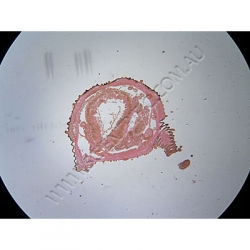
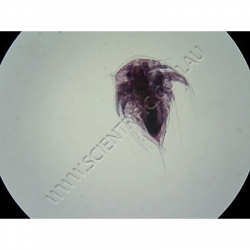
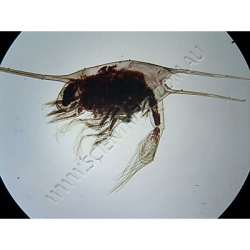
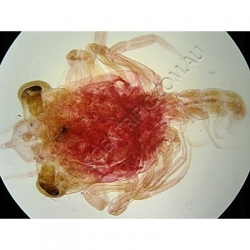
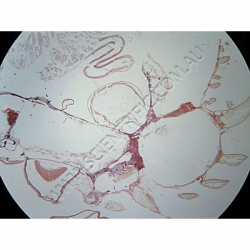
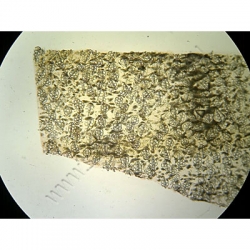
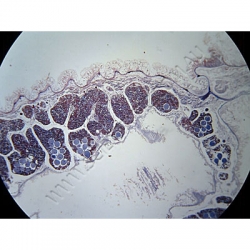
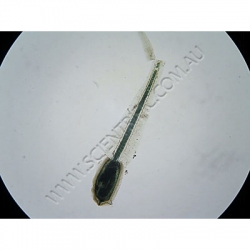
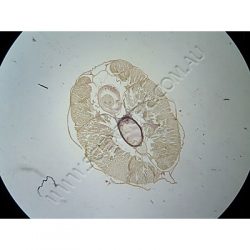
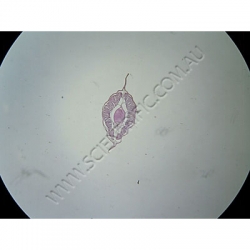
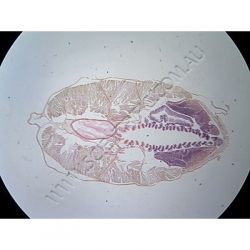
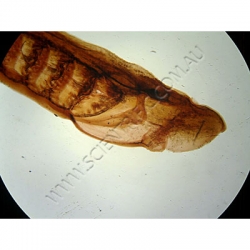
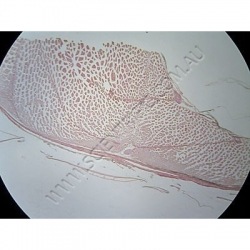
541 low relevance results shown for 'Red'. Prev |1|2|3|4|5|6|7|8|9|10|11|12|13|14|15|16|17|18|19|20|21|22 | Next | View 100 per page
Showing low relevance matches only. Return to normal search results
Curriculum resources related to 'Red'
ACSSU184 Year 10 Biological SciencesDNA - The transmission of heritable characteristics from one generation to the next involves DNA and genes ACSSU097 Year 6 Physical Sciences
Electrical Circuits - Electrical energy can be transferred and transformed in electrical circuits and can be generated from a range of sources ACSSU115 Year 7 Earth and Space Sciences
Earth Moon Sun - Predictable phenomena on Earth, including seasons and eclipses, are caused by the relative positions of the sun, Earth and the moon ACSSU229 Year 10 Physical Sciences
Forces and Motion - The motion of objects can be described and predicted using the laws of physics ACSBL029 Year 11 Biodiversity and the interconnectedness of life
Ecosystem dynamics - Models of ecosystem interactions (for example, food webs, successional models) can be used to predict the impact of change and are based on interpretation of and extrapolation from sample data (for example, data derived from ecosystem surveying techniques ACSBL085 Year 12 Heredity and continuity of life
DNA genes and the continuity of life - Frequencies of genotypes and phenotypes of offspring can be predicted using probability models, including Punnett squares, and by taking into consideration patterns of inheritance, including the effects of dominant, autosomal and sex-linked alleles and mu ACSBL090 Year 12 Heredity and continuity of life
Continuity of life on Earth - Natural selection occurs when selection pressures in the environment confer a selective advantage on a specific phenotype to enhance its survival and reproduction; this results in changes in allele frequency in the gene pool of a population ACSBL091 Year 12 Heredity and continuity of life
Continuity of life on Earth - In additional to environmental selection pressures, mutation, gene flow and genetic drift can contribute to changes in allele frequency in a population gene pool and results in microevolutionary change ACSCH056 Year 11 Molecular interactions and reactions
Intermolecular forces and gases - The shapes of molecules can be explained and predicted using three dimensional representations of electrons as charge clouds and using valence shell electron pair repulsion (VSEPR) theory ACSCH073 Year 11 Molecular interactions and reactions
Rates of chemical reactions - Catalysts, including enzymes and metal nanoparticles, affect the rate of certain reactions by providing an alternative reaction pathway with a reduced activation energy, hence increasing the proportion of collisions that lead to a chemical change ACSCH091 Year 12 Equilibrium acids and redox reactions
Chemical equilibrium systems - Over time, physical changes and reversible chemical reactions reach a state of dynamic equilibrium in a closed system, with the relative concentrations of products and reactants defining the position of equilibrium ACSCH096 Year 12 Equilibrium acids and redox reactions
Chemical equilibrium systems - Equilibrium position can be predicted qualitatively using equilibrium constants ACSCH097 Year 12 Equilibrium acids and redox reactions
Chemical equilibrium systems - Acids are substances that can act as proton (hydrogen ion) donors and can be classified as monoprotic or polyprotic depending on the number of protons donated by each molecule of the acid ACSCH098 Year 12 Equilibrium acids and redox reactions
Chemical equilibrium systems - The strength of acids is explained by the degree of ionisation at equilibrium in aqueous solution, which can be represented with chemical equations and equilibrium constants (Ka) ACSCH099 Year 12 Equilibrium acids and redox reactions
Chemical equilibrium systems - The relationship between acids and bases in equilibrium systems can be explained using the Brønsted Lowry model and represented using chemical equations that illustrate the transfer of hydrogen ions ACSCH100 Year 12 Equilibrium acids and redox reactions
Chemical equilibrium systems - The pH scale is a logarithmic scale and the pH of a solution can be calculated from the concentration of hydrogen ions; Kw can be used to calculate the concentration of hydrogen ions from the concentration of hydroxide ions in a solution ACSCH101 Year 12 Equilibrium acids and redox reactions
Chemical equilibrium systems - Acidbase indicators are weak acids or bases where the acidic form is of a different colour to the basic form ACSCH102 Year 12 Equilibrium acids and redox reactions
Chemical equilibrium systems - Volumetric analysis methods involving acidbase reactions rely on the identification of an equivalence point by measuring the associated change in pH, using chemical indicators or pH meters, to reveal an observable end point ACSCH103 Year 12 Equilibrium acids and redox reactions
Oxidation and reduction - A range of reactions, including displacement reactions of metals, combustion, corrosion, and electrochemical processes, can be modelled as redox reactions involving oxidation of one substance and reduction of another substance ACSCH104 Year 12 Equilibrium acids and redox reactions
Oxidation and reduction - Oxidation can be modelled as the loss of electrons from a chemical species, and reduction can be modelled as the gain of electrons by a chemical species; these processes can be represented using half equations ACSCH106 Year 12 Equilibrium acids and redox reactions
Oxidation and reduction - The relative strength of oxidising and reducing agents can be determined by comparing standard electrode potentials ACSCH107 Year 12 Equilibrium acids and redox reactions
Oxidation and reduction - Electrochemical cells, including galvanic and electrolytic cells, consist of oxidation and reduction half reactions connected via an external circuit that allows electrons to move from the anode (oxidation reaction) to the cathode (reduction reaction) ACSCH108 Year 12 Equilibrium acids and redox reactions
Oxidation and reduction - Galvanic cells, including fuel cells, generate an electrical potential difference from a spontaneous redox reaction; they can be represented as cell diagrams including anode and cathode halfequations ACSCH110 Year 12 Equilibrium acids and redox reactions
Oxidation and reduction - Cell potentials at standard conditions can be calculated from standard electrode potentials; these values can be used to compare cells constructed from different materials ACSCH130 Year 12 Structure synthesis and design
Properties and structure of organic materials - Data from analytical techniques, including mass spectrometry, xray crystallography and infrared spectroscopy, can be used to determine the structure of organic molecules, often using evidence from more than one technique ACSPH040 Year 11 Thermal nuclear and electrical physics
Electrical circuits - The energy available to charges moving in an electrical circuit is measured using electric potential difference, which is defined as the change in potential energy per unit charge between two defined points in the circuit ACSPH041 Year 11 Thermal nuclear and electrical physics
Electrical circuits - Energy is required to separate positive and negative charge carriers; charge separation produces an electrical potential difference that can be used to drive current in circuits ACSPH061 Year 11 Linear Motion and Waves
Linear motion and force - Representations, including graphs and vectors, and/or equations of motion, can be used qualitatively and quantitatively to describe and predict linear motion ACSPH064 Year 11 Linear Motion and Waves
Linear motion and force - Momentum is a property of moving objects; it is conserved in a closed system and may be transferred from one object to another when a force acts over a time interval ACSPH065 Year 11 Linear Motion and Waves
Linear motion and force - Energy is conserved in isolated systems and is transferred from one object to another when a force is applied over a distance; this causes work to be done and changes to kinetic and/or potential energy of objects ACSPH073 Year 11 Linear Motion and Waves
Waves - A mechanical system resonates when it is driven at one of its natural frequencies of oscillation; energy is transferred efficiently into systems under these conditions ACSPH076 Year 11 Linear Motion and Waves
Waves - A wave model explains a wide range of lightrelated phenomena including reflection, refraction, total internal reflection, dispersion, diffraction and interference; a transverse wave model is required to explain polarisation ACSPH021 Year 11 Thermal nuclear and electrical physics
Heating processes - Change of state involves internal energy changes to form or break bonds between atoms or molecules; latent heat is the energy required to be added to or removed from a system to change the state of the system
Products related to 'Red'
-Ts-Pharynx.jpg)
Slide Lumbricus Transverse Section of Pharynx
Last one available
Limbricus, transverse section of pharynx. A quality Australian made and prepared microscope slide.
Image: K1758-Annelida--Lumbricus-(Earthworm)-Ts-Pharynx.jpg
Order code: K1758
-Ts-oesophagus.jpg)
Slide Lumbricus Transverse Section of Oesophagus
Last one available
Limbricus, transverse section of oesophagus. A quality Australian made and prepared microscope slide.
Image: K1759-Annelida--Lumbricus-(Earthworm)-Ts-oesophagus.jpg
Order code: K1759
-Ts-Crop.jpg)
Slide Lumbricus Transverse Section of Crop
Last one available
Lumbricus, transverse section of crop. A quality Australian made and prepared microscope slide.
Image: K1767-Annelida--Lumbricus-(Earthworm)-Ts-Crop.jpg
Order code: K1767
-Ts-Gizzard.jpg)
Slide Lumbricus Transverse Section of Gizzard
Last one available
Lumbricus, transverse section of gizzard. A quality Australian made and prepared microscope slide.
Image: K1768-Annelida--Lumbricus-(Earthworm)-Ts-Gizzard.jpg
Order code: K1768
-Ts-Clitellum.jpg)
Slide Lumbricus Transverse Section of Clitellum
Last one available
Lumbricus, transverse section clitellum. A quality Australian made and prepared microscope slide.
Image: K1769-Annelida--Lumbricus-(Earthworm)-Ts-Clitellum.jpg
Order code: K1769
-Ts-Intestine.jpg)
Slide Lumbricus Transverse Section of Intestine
Last one available
Lumbricus, transverse section of intestine. A quality Australian made and prepared microscope slide.
Image: K1770-Annelida--Lumbricus-(Earthworm)-Ts-Intestine.jpg
Order code: K1770
-ts-seta.jpg)
Slide Lumbricus Transverse Section of Seta
Last one available
Lumbricus, transverse section of seta. A quality Australian made and prepared microscope slide.
Image: K1771-Annelida-Lumbricus-(Earthworm)-ts-seta.jpg
Order code: K1771
-median-ls-anterior-region.jpg)
Slide Lumbricus Median Longitudinal Section of Anterior Region
Last one available
Lumbricus, median longitudional section of anterior region. A quality Australian made and prepared microscope slide.
Image: K1774-Lumbricus-(Earthworm)-median-ls-anterior-region.jpg
Order code: K1774

Slide Peripatus Transverse Section of General Body Structure
Last one available
Peripatus, transverse section of general body structure. A quality Australian made and prepared microscope slide.
Image: K1778-Onycophora-peripiatus-ts.jpg
Order code: K1778

Slide Nauplius Larva Whole Mount
Last one available
Naupilus Larva, whole mount. A quality Australian made and prepared microscope slide.
Image: K1786-Nauplius-wm.jpg
Order code: K1786

Slide Zoea Larva Whole Mount
Last one available
Zoea Larva, whole mount. A quality Australian made and prepared microscope slide.
Image: K1786B-Zoea-wm.jpg
Order code: K1786B

Slide Megalops Larva Whole Mount
Last one available
Megalops Larva, whole mount. A quality Australian made and prepared microscope slide.
Image: K1786C-Megalops-wm.jpg
Order code: K1786C

Slide Starfish Transverse Section through Arm
Last one available
A transverse section through the arm of a starfish.
This is a quality Australian made and prepared microscope slide.
Order code: K1853

Slide Leptosynapta Whole Mount of Skin Showing Anchors
Last one available
A whole mount of Leptosynapta skin showing anchors.
This is a quality Australian made and prepared microscope slide.
Order code: K1854

Slide Balanoglossus Sagittal Section through Anterior Region
Last one available
Balanglossus, sagittal section through anterior region.
This is quality Australian made and prepared microscope slide.
Order code: K1856

Slide Ascidian Whole Mount Swimming Tadpole Larva
Last one available
Ascidian, whole mount swimming tadpole larva. A quality Australian made and prepared microscope slide.
Image: K1857-Urochordata-Ascidian-WM-larva.jpg
Order code: K1857

Slide Amphioxus Transverse Section of Intestine
Last one available
A transverse section of Amphioxus intestine.
This is a quality Australian made and prepared microscope slide.
Order code: K1858C

Slide Amphioxus Transverse Section of Caudal Region
Last one available
Amphioxus, transverse section of caudal region.
This is a quality Australian made and prepared microscope slide.
Order code: K1858D

Slide Amphioxus Transverse Section of Male Gonads
Last one available
A transverse section of male Amphioxus gonads.
This is a quality Australian made and prepared microscope slide.
Order code: K1858E

Slide Ammocoetes Larva Whole Mount Young Adult
Last one available
Ammocoetes, larva, whole mount of young adult. A quality Australian made and prepared microscope slide.
Image: K1859E-Cyclostomata-lamprey-ammocoetes-larva-WM-Young-adult.jpg
Order code: K1859E

Slide Dogfish Vertical Section through Skin
Vertical section through dogfish skin.
This is a quality Australian made and prepared microscope slide.
Order code: K1860
Slide Cycloid Scales
Last one available
This product is temporarily unavailable.
Microscope slide of Cycloid fish scales. This is a quality Australian made and prepared microscope slide. Order code: K1862B
Microscope slide of Cycloid fish scales. This is a quality Australian made and prepared microscope slide. Order code: K1862B
Slide Ganoid Scales
Last one available
This product is temporarily unavailable.
Microscope slide Ganoid fish scales. This is a quality Australian made and prepared microscope slide. Order code: K1862D
Microscope slide Ganoid fish scales. This is a quality Australian made and prepared microscope slide. Order code: K1862D
Slide Toad Kidney
Last one available
Toad kidney.
This is a quality Australian made and prepared microscope slide.
Order code: K1870F
Slide Bird Blood
Last one available
Bird blood. A quality Australian made and prepared microscope slide.
Order code: K1895
541 low relevance results shown for 'Red'. Prev |1|2|3|4|5|6|7|8|9|10|11|12|13|14|15|16|17|18|19|20|21|22 | Next | View 100 per page


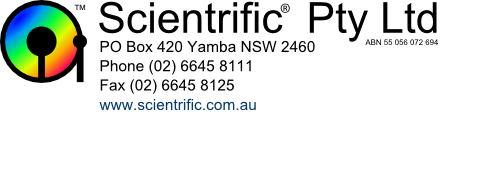
 ,
,